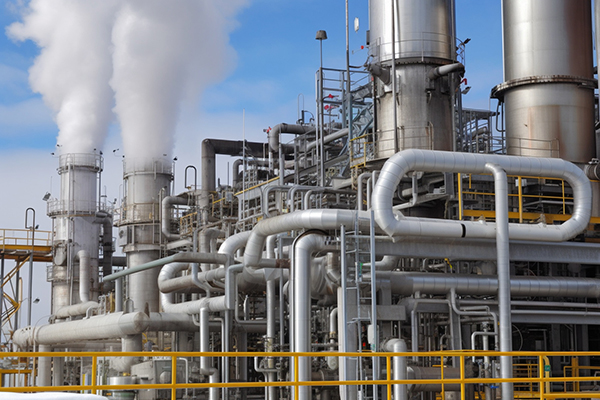Chemical additives refer to various substances used in the chemical production process to improve product performance, increase production efficiency, regulate material properties or processing techniques. These chemical additives can improve product quality, increase production efficiency, and reduce production costs by affecting chemical reactions, physical properties, or processing processes. Chemical additives are widely used in the production and processing of plastics, rubber, coatings, oils, textiles, pharmaceuticals, agriculture, and other fields.
There are various types of chemical additives, which can be classified into many categories based on their functions and uses. Common ones include plasticizers, vulcanizing agents, coloring agents, preservatives, light stabilizers, interface agents, etc. Each chemical additive has a specific role and application field, and can play an important role in the production and processing process.
A classification method for chemical additives based on their functional roles:
Stabilizing agent
Stabilizers are mainly used to improve the stability and durability of products, and stabilizers are commonly referred to as anti-aging agents. They can extend the product's lifespan and service life by preventing factors such as chemical reactions, light exposure, oxidation, and thermal decomposition from affecting the product. Stabilizing agents are widely used in industries such as plastics, rubber, coatings, oils, pigments, etc. Common stabilizing agents include antioxidants, light stabilizers, heat stabilizers, mold inhibitors, preservatives, rust inhibitors, etc.
Improving mechanical performance additives
Improving mechanical performance additives are mainly used to enhance the mechanical properties of materials, such as strength, toughness, hardness, etc. These additives can improve the mechanical properties of materials by adjusting their structure and properties, making them more suitable for specific application needs. Common additives for improving mechanical properties include vulcanizing agents, vulcanization accelerators, anti scorching agents, coupling agents, crosslinking agents, reinforcing agents, fillers, impact resistant agents, etc.
Improving processing performance with additives
Improving processing performance additives are a type of chemical additive used to enhance the performance of materials during processing. They can improve the flowability, formability, lubricity, etc. of materials, making them easier to process and shape. Common additives for improving processing performance include lubricating additives, release agents, plasticizers, softeners, defoamers, leveling agents, adhesives, crosslinkers, thickeners, dyeing promoters, anti dyeing agents, emulsifiers, dispersants, solubilizers, etc.
Softening and lightweighting additives
Softening and lightweighting agents are a type of chemical additive used to improve material softness and reduce material density. Common softening and lightweighting agents include plasticizers, foaming agents, softeners, etc.
Additives for improving surface performance and appearance
Additives used to improve surface properties and appearance are a type of chemical additive used to enhance the surface properties and aesthetics of materials. Common additives used to improve surface performance and appearance include lubricants, anti-static agents, anti fog agents, colorants, fixing agents, whitening agents, brighteners, anti adhesion agents, lubricants, detergents, penetrants, bleaching aids, emulsifiers, dispersants, etc.
Flame retardant additive
Refractory additives are a type of chemical additive used to improve the fire resistance of materials. They can slow down the burning speed of materials, reduce the risk of flame spread, and decrease the release of toxic gases and smoke. Common flame retardant additives include flame retardants, carbonization agents, etc.
Enhancing Strength and Hardness Additives
Enhancement of strength and hardness additives are mainly used to increase the strength and hardness of materials. These additives will interact with the material, changing its microstructure or physical properties, thereby making the material stronger and more durable. Common strength and hardness enhancing agents include fillers, reinforcing agents, reinforcing agents, crosslinking agents, coupling agents, etc.
Change taste enhancers
Taste altering agents refer to chemical substances or additives used to alter the taste of food or beverages. These additives can alter the taste experience of food by adjusting its characteristics such as taste, texture, sweetness, acidity, saltiness, and bitterness. Common taste enhancers include seasonings, acidifiers, umami, variety improvers, etc.
Improving flow and rheological performance additives
Additives that improve flow and rheological properties are commonly used to regulate the flowability, viscosity, and other properties of materials to meet specific processing or application requirements. Common additives for improving flow and rheological properties include pour point depressants, viscosity index improvers, leveling agents, thickeners, rheology agents, etc.
The classification of chemical additives is not absolute, but based on their functions and uses. In practical applications, certain chemical additives may have multiple functions, leading to cross or overlap in classification. In addition, with the development of technology and the deepening of research, new chemical additives continue to emerge, which will also bring certain challenges to classification. Therefore, in practical applications, chemical additives can be flexibly classified and used according to specific situations and needs to achieve the best results and benefits.






 Home
Home
 Product
Product
 News
News
 Contact
Contact